How to Treat and Prevent Seasonal Allergy Symptoms ist die Überschrift der Nachrichten, die der Autor von NachrichtenStar diesen Artikel gesammelt hat. Bleiben Sie auf NachrichtenStar auf dem Laufenden, um die neuesten Nachrichten zu diesem Thema zu erhalten. Wir bitten Sie, uns in sozialen Netzwerken zu folgen.


Supported by Science
How to Treat and Prevent Seasonal Allergy Symptoms
How to Treat and Prevent
Seasonal Allergy Symptoms

Spring may have sprung where you live, or you may still be waiting—all climes have their benefits. The relatively warm temperatures year-round in much of California and the southern states mean that there’s usually something blooming, and this means multiseason allergies. (If it’s not yet T-shirt weather for you, gloat and enjoy your clear sinuses and eyes.)
Purvi Parikh, MD, is a board-certified allergist and immunologist who helps people cope with seasonal allergies. Itchy, puffy eyes and clogged sinuses are two easily recognizable symptoms. But Parikh explains that symptoms can also include asthma, rashes, and sore throat—and that many people don’t realize when these symptoms are linked to seasonal allergies. The treatment approach she’s most enthusiastic about is desensitization therapy, which helps prevent the allergies that cause these annoying symptoms: “Desensitization is one of the most effective, oldest, and safest therapies that we have, and it actually addresses the underlying problem.”
Multiple Approaches to Seasonal Allergies
By Purvi Parikh, MD, as told to goop
Expected and Unexpected Seasonal Allergy Symptoms
Allergies can affect you from head to toe. People always think that spring is the big allergy season, but you may be more affected in summer and fall. It all depends on what you are allergic to. Symptoms include itchy and watery eyes, a runny nose, sneezing, and nasal congestion. Asthma, rashes, and sore throat are other symptoms that many people don’t realize may result from seasonal allergies. People assume they’re sick when they have a sore throat, but it can be due to seasonal allergies. We also see an uptick in hives, eczema, and asthma when the pollen counts are the highest. And many people don’t realize that there’s a link between allergies and asthma. Allergies are the most common cause of asthma. We always see an uptick in ER visits, office visits, and hospitalizations due to asthma attacks in the spring. Never take any breathing symptom like coughing, wheezing, or chest tightness lightly. We see 10 deaths a day from asthma in this country alone.
OTC Medications
For symptoms that are above your neck, you can try some of the over-the-counter (OTC) antihistamine medications. The 24-hour allergy pills tend to work a lot better than Benadryl, which has more side effects associated with it.
There are great nasal spray options, too, but the nasal corticosteroids like Flonase or Nasacort have to be taken regularly to work. You don’t have to use them year-round, but they need to be taken consecutively for seven days to start working. Begin right when you start feeling symptoms or even a week or two before your symptoms traditionally hit. Luckily, overall, they are safe. But if you start getting nosebleeds, stop using them.
What I would avoid are Afrin and decongestants in general: anything with oxymetazoline or pseudoephedrine in it. Even though decongestants temporarily make you feel good, they have a rebound effect, and if you use them for more than three to five days they can make your symptoms worse. And they can be harmful because they can cause your blood pressure to go up. For any OTC medicine, always clear it with your doctor to make sure it’s safe for you.
If you suffer from below-the-neck symptoms—such as coughing, wheezing, and shortness of breath—don’t try to self-treat because this is a sign that your lungs are affected and it can be dangerous. You may have allergic asthma or allergic bronchitis, and you need to see a physician to get a proper diagnosis and treatment. Many people assume allergies are not life-threatening, especially environmental allergies, but they can be, especially if they affect your breathing.
Help for Itchy, Puffy, Red Eyes
There are OTC eye drops that you can use as needed for itchy eyes, and usually antihistamine eye drops are best. Antihistamine drops will also help with puffiness around the eyes. Putting a cool washcloth on your eyes will help reduce inflammation. Or you can even use ice the same way you would for an injury or other swelling. But you might need prescription medication to deal with the puffiness if it doesn’t go down. Oral antihistamines will help with eye puffiness as well. But a lot of the effective eye drops are by prescription, so you may need to seek medical attention. I would avoid products such as Visine Red Eye that have ingredients similar to those in decongestant nose sprays.
Very little of these drops and sprays gets into your body, but small amounts can enter your bloodstream, and it’s important that you clear it with your doctor if you’ll be using OTC medicines regularly.
Editors’ Picks: A Feel- (and Look-)
Better Kit for Eyes and Skin
STEP 1: Cleanse
Take a shower to cleanse off as much pollen, dander, or whatever’s causing the problem as possible. If that’s not an option, pull your hair back (hair can carry allergens) with a silk scrunchie and wash your face.
-
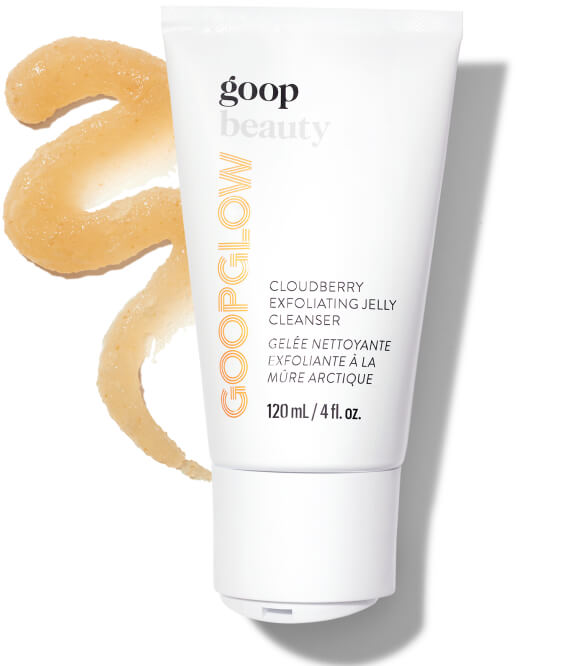 goop Beauty
goop Beauty
GOOPGLOW CLOUDBERRY
EXFOLIATING JELLY CLEANSER
goop, $28/$25 with subscriptionSHOP NOW -
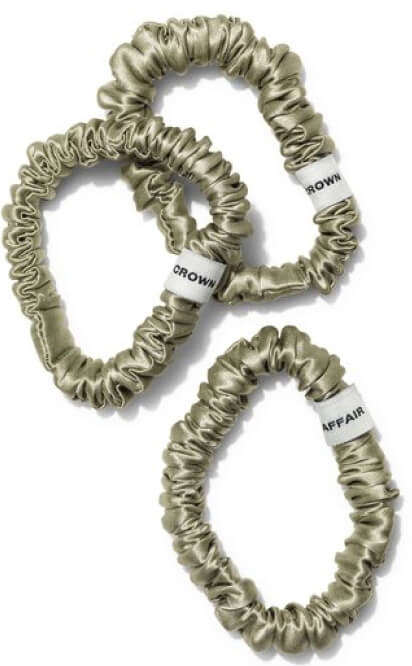 Crown Affair
Crown Affair
THE SCRUNCHIE NO. 001
goop, $15SHOP NOW
STEP 2: Calm the whole eye area
The combination of these ultrahydrating prebiotic eye sheet masks and makeup artist Jillian Dempsey’s famous 24-karat-gold-plated vibrating T-bar feels absolutely fantastic. Together they firm, lift, and depuff to an amazing degree.
-
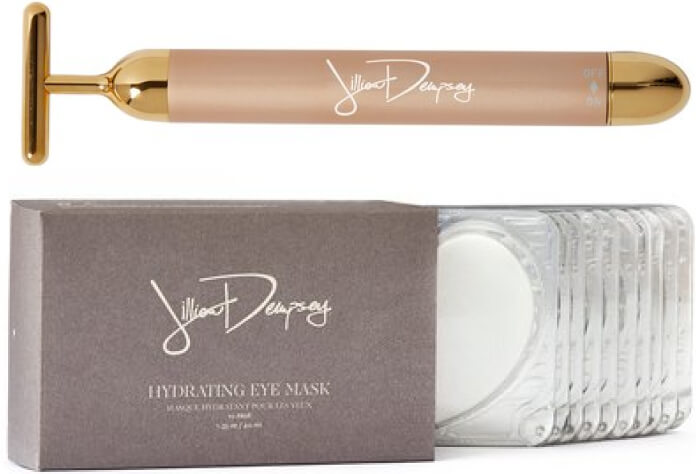 Jillian Dempsey
Jillian Dempsey
THE SCULPT + SMOOTH DUO
goop, $245SHOP NOW
STEP 3: Smooth away redness
A bit of concealer can help you get ready to face the world. First, pat in a little eye cream (this one is clinically tested and helps firm and smooth the appearance of crow’s-feet, fine lines, puffiness, and dark circles) to help the concealer blend more easily. Second, dab concealer on with a brush (the one from Westman Atelier rules), only where you want to cover redness (or dark circles, which allergies can exacerbate). With your middle finger, gently pat the concealer—don’t rub. It will seem like the concealer won’t blend; keep patting for a few seconds more and it’ll be perfectly blended.
-
 Westman Atelier
Westman Atelier
SPOT CHECK BRUSH
goop, $38SHOP NOW -
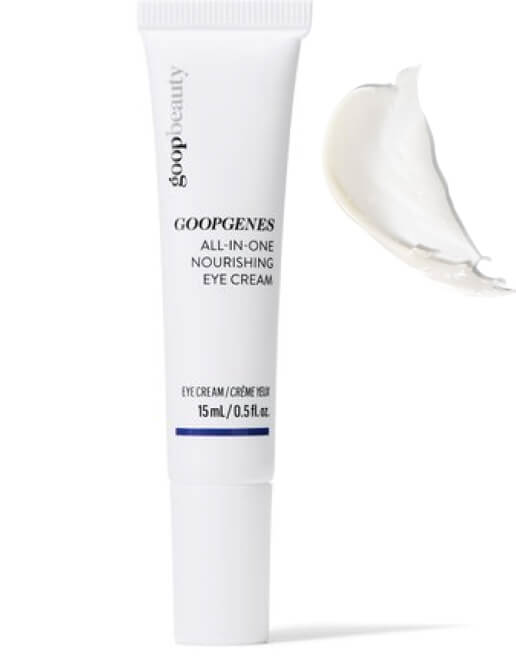 goop Beauty
goop Beauty
GOOPGENES ALL-IN-ONE NOURISHING EYE CREAM
goop, $55/$50 with subscriptionSHOP NOW -
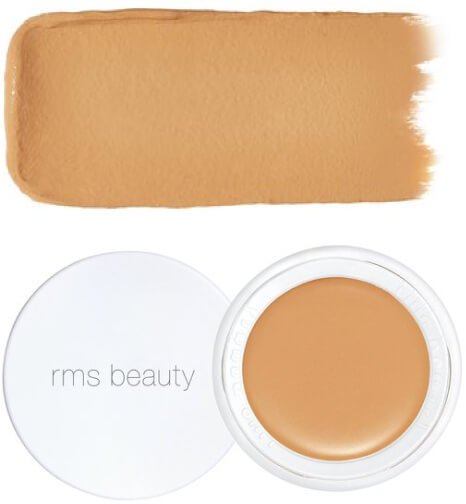 RMS Beauty
RMS Beauty
“UN” COVER UP
goop, $36SHOP NOW
Topical Help for Skin Rashes
For rashes, antihistamines are great, and OTC hydrocortisone cream is also helpful. You can also take OTC oral antihistamines, but if you have trouble controlling your rash, you may need something stronger prescribed to you.
Vitamin D Supplements
A supplement that’s been linked to improvement of allergy symptoms and immune health in general is vitamin D. It’s good to make sure that you’re taking vitamin D on a regular basis, especially if your levels are low—and your primary care doctor should check that. But most of us, especially people who live in the northeast of the US, are low. It can’t hurt to take 1,000 to 2,000 international units (IU) of vitamin D on a regular basis. But that won’t work right away as an antihistamine would.
Masking Up
The first year of the COVID-19 pandemic, before we knew much about the virus, people were wearing masks outdoors, and allergy and asthma symptoms were considerably reduced. If you are prone to allergies, you may want to consider wearing a mask outdoors. You can pick a comfortable one. And along the same lines, some people will opt to wear sunglasses or glasses in the springtime, because this creates a barrier so that pollen doesn’t get in your eyes. When you come home, we recommend changing clothes and taking a shower to wash pollen off your body, so you’re not carrying it around all day and into bed.
Editors’ Picks: For the Outdoors
-
This lightweight, comfortable air mask will keep out air pollution, smog, dust, and pollen. It’s washable and has replaceable filters.
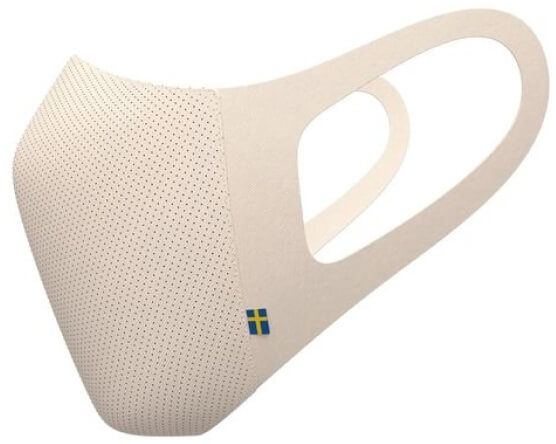 Airinum
Airinum
LITE AIR MASK
goop, $49SHOP NOW -
Handcrafted in Italy, these oversize sunglasses are just what you want to create a barrier. And polarized, blue-light-filtering lenses help baby your sensitive eyes.
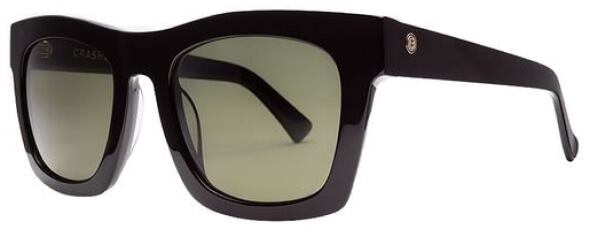 Electric
Electric
CRASHER 53 SUNGLASSES
goop, $250SHOP NOW
Air Purifiers
An air purifier with a HEPA filter may be helpful. If you’re allergic to your cat or dog or mold that may be in your house, I would use an air purifier.
Editors’ Picks: Seasonal Support
-
Remove pollen, dust, and smoke with this energy-efficient (Energy Star–certified) air purifier. It has a washable prefilter and UltraHEPA and VOC filters.
 Air Doctor
Air Doctor
4-IN-1 AIR PURIFIER
goop $498SHOP NOW -
Indoor/Outdoor Support is formulated with botanical extracts and powders—including tinospora, nettle, and butterbur—that have been used traditionally for sinus health. And ongoing research is discovering the biochemistry behind this use.*
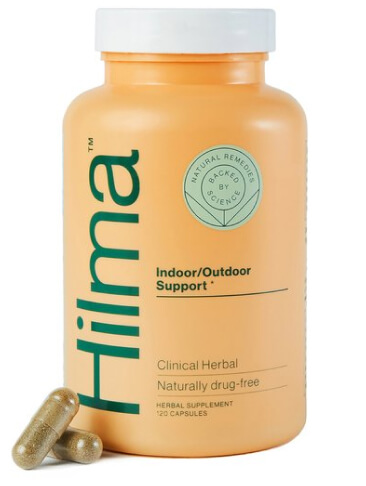 Hilma
Hilma
INDOOR/OUTDOOR SUPPORT
goop, $30SHOP NOW
Desensitization Therapy
Allergies and symptoms can be made much less severe by being desensitized with allergy shots. This won’t work right away in the midst of spring—you have to start around three or four months ahead of time. We identify what you’re allergic to, and then we can desensitize you to make you less allergic. It’s very effective, and people need less medicine over time. Some people get close to a cure, or they feel asymptomatic in most seasons.
Desensitization is one of the most effective, oldest, and safest therapies that we have, and it actually addresses the underlying problem. All the other things I’ve mentioned just suppress the symptoms. And allergy shots help other conditions that are triggered by allergies. Skin conditions and asthma tend to improve.
Does Where You Live Matter?
With climate change and global warming, all bets are off because even parts of the country that once weren’t typically bad in terms of seasonal allergies have become bad. The warmer weather is causing much longer seasons, and plants are making more pollen. Plants use carbon dioxide to live, and with global warming, carbon dioxide levels are going up. So now you have these superpollinator plants that are pollinating for longer than usual.
Pretty much any location can have issues. That being said, the South, with a warmer climate, has a longer pollen season. The Northeast can be bad in the spring and fall. Some pollens might vary from location to location, but many are similar in different parts of the country.
Purvi Parikh, MD, is an allergist and immunologist working with the Allergy and Asthma Network, a national nonprofit that provides education, advocacy, and resources for children and adults with asthma, allergies, and related conditions. She is board-certified by the American Board of Internal Medicine and the American Board of Allergy and Immunology. Parikh received her MD from St. George’s University, completed her residency at the Cleveland Clinic Foundation, and completed her fellowship training in allergy and immunology at Albert Einstein College of Medicine’s Montefiore Medical Center.
This article is for informational purposes only. It is not, nor is it intended to be, a substitute for professional medical advice, diagnosis, or treatment and should never be relied upon for specific medical advice. To the extent that this article features the advice of physicians or medical practitioners, the views expressed are the views of the cited expert and do not necessarily represent the views of goop.
These statements have not been evaluated by the Food and Drug Administration. This product is not intended to diagnose, treat, cure, or prevent any disease.












